What is cotton fabric? Experts explain the characteristics of the fabric and its advantages and disadvantages.

Cotton is probably the most familiar fabric to us and the one we come into contact with most often.
The word "cotton" is so widely used that it is impossible to describe its contents and characteristics in a few words.
In this article, our company has been selling "cotton" for more than 30 years since its establishment,
- Advantages and disadvantages of cotton fabric
- Types of cotton and how to care for them
- Recommended cotton fabrics
I will introduce the contents that cover everything from the advantages and disadvantages of cotton to how to care for cotton.
Click here to visit our online store.
Table of contents
- What is cotton fabric?
- Advantages and Disadvantages of Cotton Fabric
- Types of Cotton
- Difference between cotton and organic cotton
- How to care for cotton fabric
- 3 recommended uses for cotton fabric
- 5 recommended cotton fabrics you can only buy here
- Summary: Once again, cotton is a wonderful fabric
What is cotton fabric?
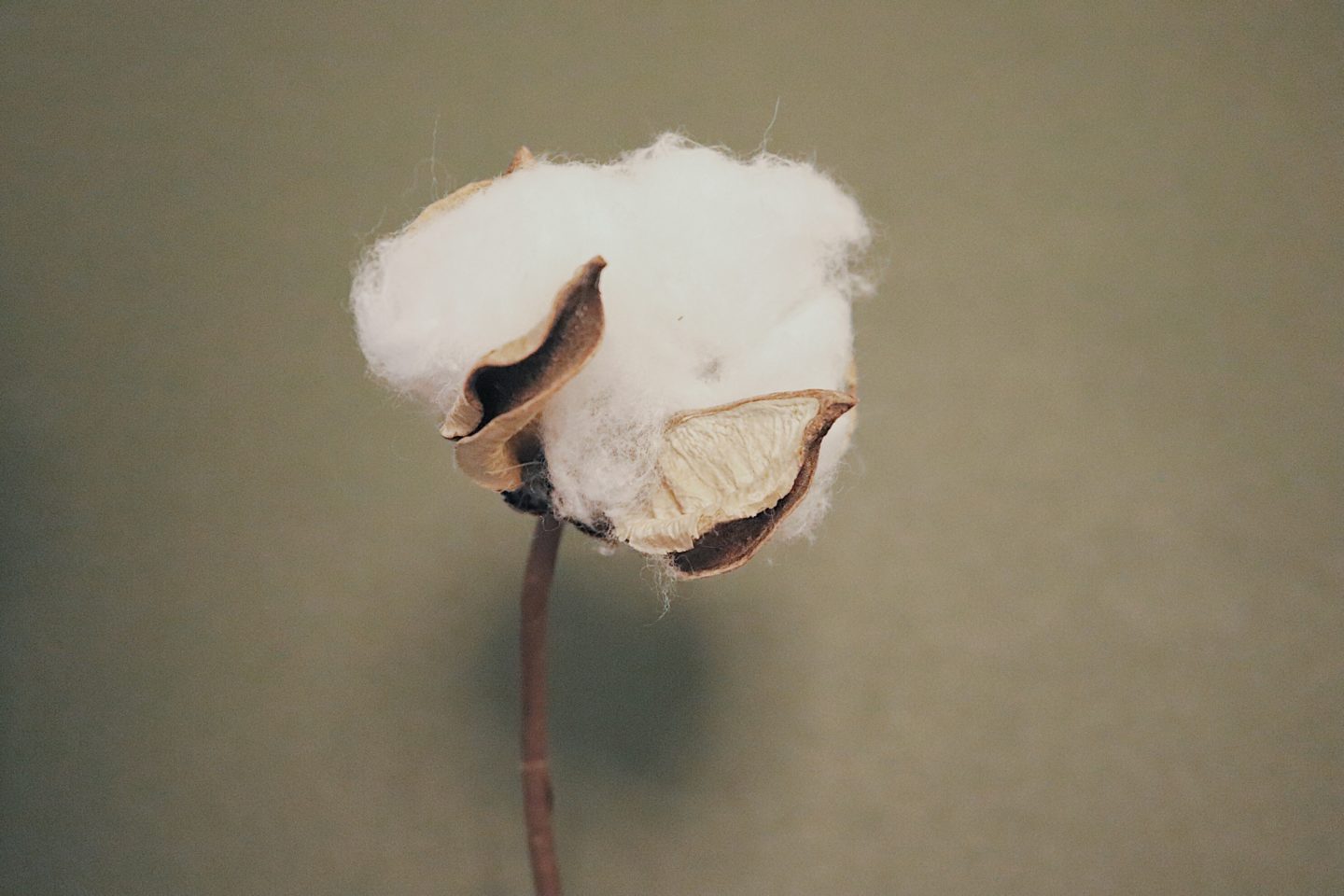
Cotton is the fiber attached to the seeds of the mallow plant.
It is called "natural fiber" or "dietary fiber" because it is a fiber that naturally exists in nature, just like "silk" and "hemp.
Cotton itself is relatively inexpensive and is used in a wide range of fields, from practical to fashionable.
I have the impression that cotton is often used in familiar items that come in direct contact with the skin, such as T-shirts, pajamas, and bed sheets.
That alone is enough to show that it is a comfortable fabric.
Advantages and Disadvantages of Cotton Fabric
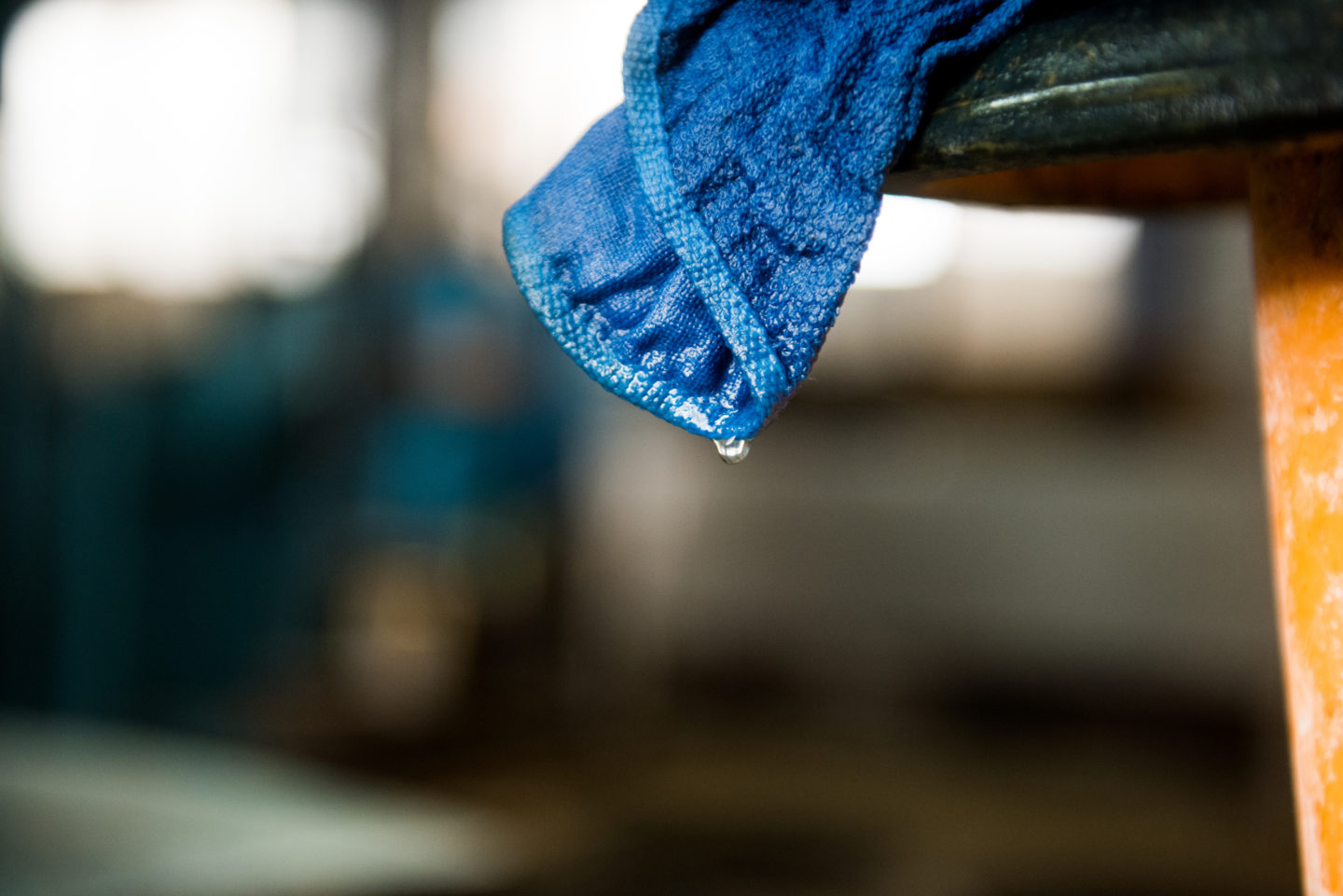
There are so many advantages to using cotton material.
- Soft
- Pleasant to the touch
- Good water absorbency
- Environmentally friendly
- Anti-static
- Durable
In particular, its water absorbency is excellent, absorbing perspiration well and being hygienic, making it suitable for daily wear and work clothes.
It also has moderate elasticity, and its durability when pulled is considerably higher than that of other fibers.
It is also 10-20% stronger when wet than when dry.
The fact that it does not lose its strength when washed is a great advantage.
Furthermore, it is resistant to alkalis such as soaps and synthetic detergents, and does not get stuck in the laundry.
Contrary to the advantages, there are some disadvantages that are worth knowing.
- Prone to wrinkling
- Prone to shrinkage
- Prone to fluffing
- Dyed cotton can fade
Some of you may have experienced these during normal laundering.
However, these disadvantages can be prevented to some extent by careful washing and care
(see below for details).
Types of Cotton
Cotton is a natural material, so the length of its fibers differs depending on the variety.
According to the length of the fiber, it is classified into the following three types.
- Long-staple cotton
- Medium-staple cotton
- Short-staple cotton
In general, long-staple cotton is high-end and short-staple cotton is inexpensive.
-Classification by fiber length
| Length of fiber | |
| Long-staple cotton | 28mm or more |
| Medium-staple cotton | 21 to 28mm or more |
| Short-staple cotton | 21mm or less |
The highest quality long-staple cotton is "Sea Island cotton" from the West Indies, followed by "Supima cotton" and "Egyptian cotton," etc. White, long and thin fibers are considered to be of good quality.
The world's three major cotton-producing countries are China, India, and the United States.
Very little cotton is grown in Japan, and the country is currently dependent on imports from the U.S. and Australia.
| Long-staple | Medium-staple | Short-staple | |
|---|---|---|---|
| Production area |
-Sea island cotton -Supima cotton Egyptian cotton |
-American cotton -Pakistan cotton -Chinese cotton |
-American cotton -Indian cotton |
|
Characteristic |
-Luxury products -Fibers are long and thin, shiny |
-Middle-grade products -More than 90% of the world's cotton |
-Low grad products -Fibers are thick, short, and firm |
| Use | Shirt, Dress | Clothing, towels, sheets, etc. | Degreasing cotton, etc. |
Difference between cotton and organic cotton
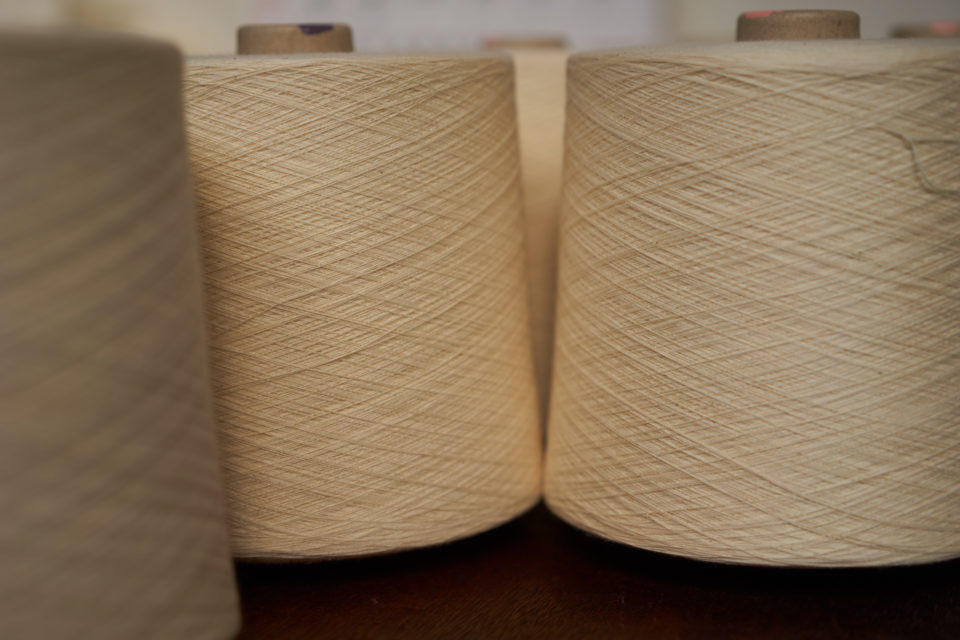
Organic cotton has been attracting attention in recent years, partly because more and more people are becoming nature-conscious and prefer natural materials.
When growing regular cotton, we are inevitably forced to use herbicides, insecticides, pesticides, and other chemicals.
One of the significance of organic cotton is that it reduces the burden on the environment.
What is the definition of organic cotton?
- Using farmland that has not been treated with chemical fertilizers or pesticides for three years
- No chemical fertilizers or pesticides are used in its cultivation
- The safety of the people who grow it and the environment is also protected
What differentiates organic cotton from regular cotton is the fact that it is being used in an effort to reduce its impact on the global environment.
This is why we choose organic cotton,
- It is chemical-free and reassuring
- They feel the quality of the material is high.
- To care for the environment
- To support the producer
- The production process is visualized.
Although more expensive than regular cotton, it is recommended for those who are concerned about pesticides and chemicals, and who want to prioritize the quality of the product.
How to care for cotton fabric
Among natural materials, "cotton" is very easy to handle, but there are a few points to keep in mind.
Here are some tips on how to care for and wash "100% cotton" fabrics.
If other fibers such as polyester are included in addition to cotton, please check the laundry label.
How to wash cotton fabric
First of all, as a precondition, use water up to about 30°C, avoiding hot water whether washing in a washing machine or by hand, as it may cause the fibers to stretch.
It is advisable to avoid using leftover water from a bath that has just been used as much as possible.
If you observe the following precautions, the cotton material will last longer and can be used comfortably forever.
- Place in a laundry net
- Basically, mild alkaline detergent is OK
- Use a mild detergent for important or expensive items
- Shorten the dehydration time
- Check the laundry label
How to dry well
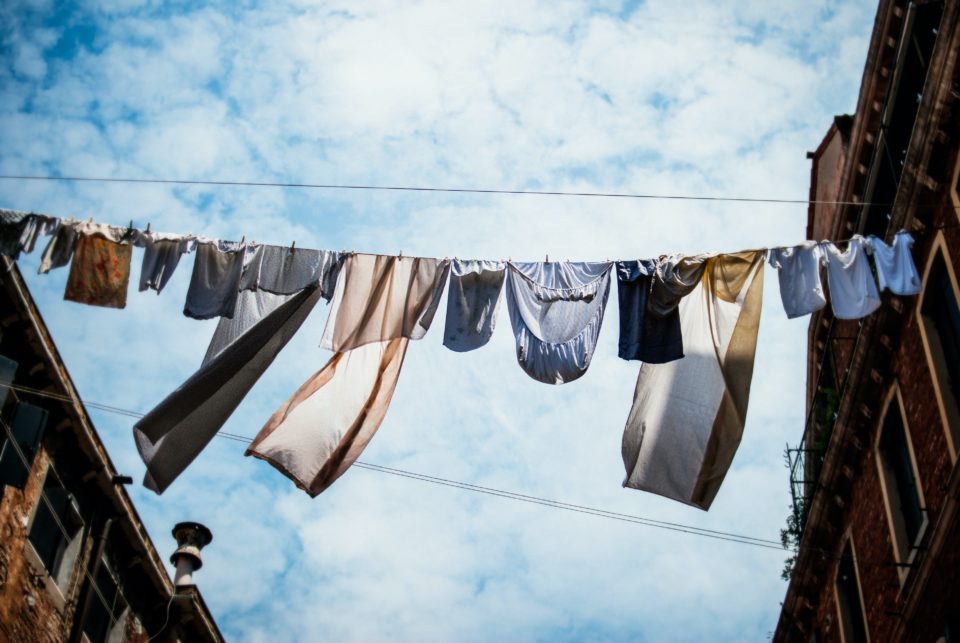
Cotton has a "habit" that causes the threads to expand when wet and return to their original state.
This "habit" is the reason why cotton tends to wrinkle and shrink easily.
You can prevent wrinkles and shrinkage as much as possible by taking the following precautions when drying items made of cotton.
- Take out the item as soon as possible after washing.
- Pull the item vertically and horizontally to shape it before hanging it up to dry.
- Dry in the shade, away from direct sunlight
- Dry in a well-ventilated place
- Do not hang dry for too long
I also recommend that you check the laundry label carefully when using a dryer.
Dyed cotton should be careful of color fading
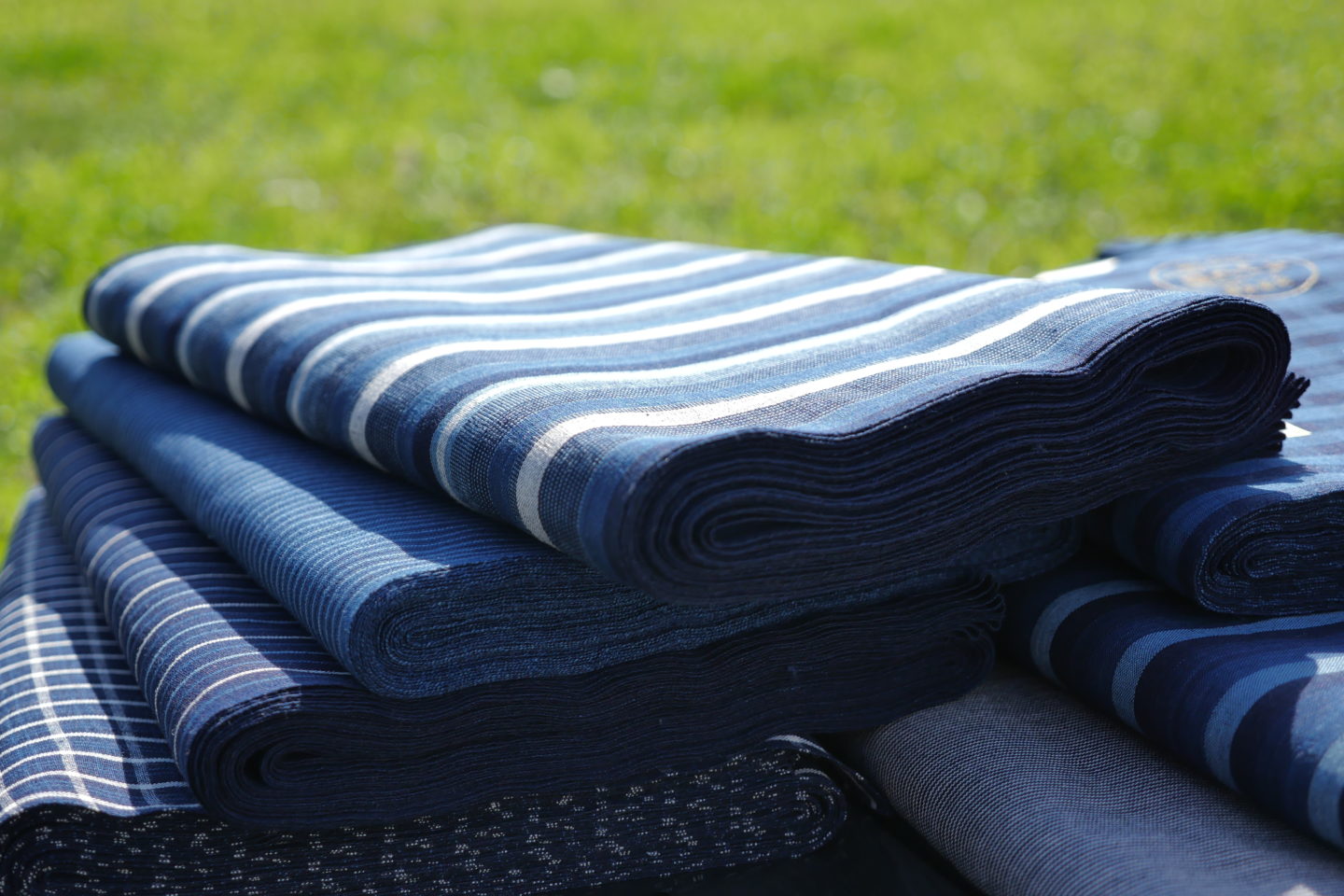
Cotton dyed with indigo or grass takes time for the color to set.
In other words, until the color sets, it is prone to fading due to strong friction.
For example, some of you may have experienced that when you combine denim with white shoes, the shoes turn a little blue.
In such cases, I recommend "washing the fabric in water" to minimize color fading.
By washing in water, excess color can be removed in advance.
As a result, the concentration of the pigment becomes lighter, which prevents the color from fading.
It also removes the glue from the fabric, making it softer and easier to use.
If you really want to prevent color fading, I recommend that you ask a specialist to apply a "color stopper" treatment.
Please wash dyed garments by themselves to prevent color transfer to other items.
When drying, please hang it in the shade, avoiding direct sunlight, as you do with other cotton fabrics.
3 recommended uses for cotton fabric
-Shirt, Blouse
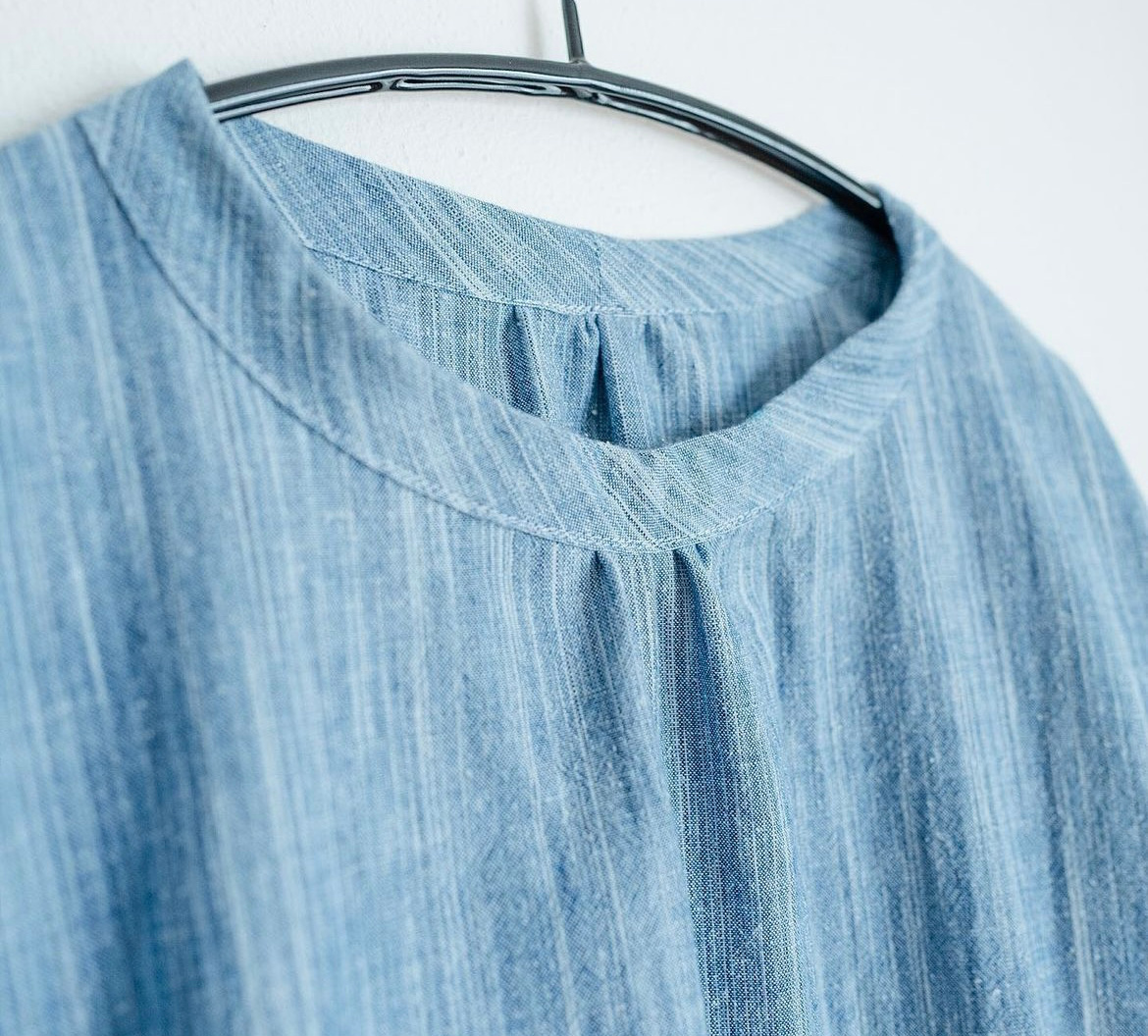
Cotton, with its excellent breathability and water absorbency, absorbs sweat well and dries quickly.
It is soft and fluffy without being prickly when worn, so we recommend tailoring casual shirts and blouses.
For the same reason, of course, it is also a perfect material for pants and skirts.
-Pajama
Sleep takes up as much as 1/3 of a day.
It is important to wear something relaxing during those hours of sleep.
I recommend cotton pajamas because they feel as if they gently and softly wrap around you.
-Cushion covers and pillow covers
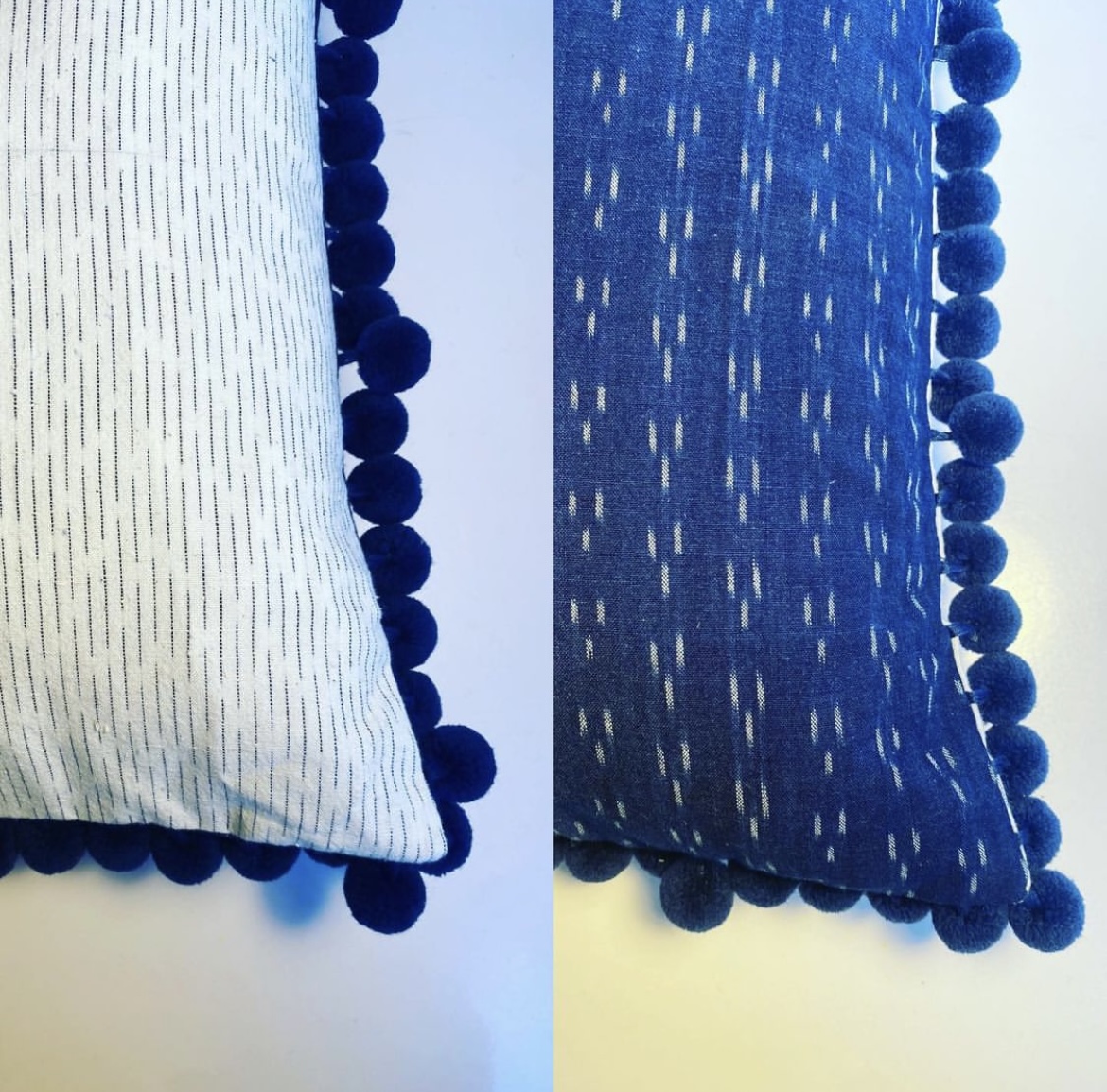
Cotton is easily washable and does not require much handling.
Cushion covers and pillowcases are highly recommended as accessories because they can be washed frequently and used cleanly.
5 recommended cotton fabrics you can only buy here
So far, we have discussed the characteristics, types, and care of cotton.
When you buy cotton fabric, what criteria do you use to make your choice?
There are many cotton fabrics available in handicraft stores and online stores.
However, some of you may not know what kind of cotton fabrics to choose from among the many available.
I have been selling cotton as a fabric merchant for more than 30 years, and I would like to introduce five recommended cotton fabrics that you can buy only at our company.
These are materials that even beginners can use with confidence, so please take a look at them along with the table summarized below.
| Recommended Use | characteristic of fabric | |
| Menasa-Fushiori | Cut and sew, Blouse | Cotton and hemp blend, suitable for summer |
| Futofushi | Pajama, Bedding | The fabric is uneven and does not cling to the skin. |
| Shimofuri | Cushion covers, fall clothes | Slightly thick and soft |
| Daimyo-stripes | Chic men's shirt | The pattern is simple and easy to use |
| Fushiori | From small cloth goods to clothes | Basic. just the right thickness |
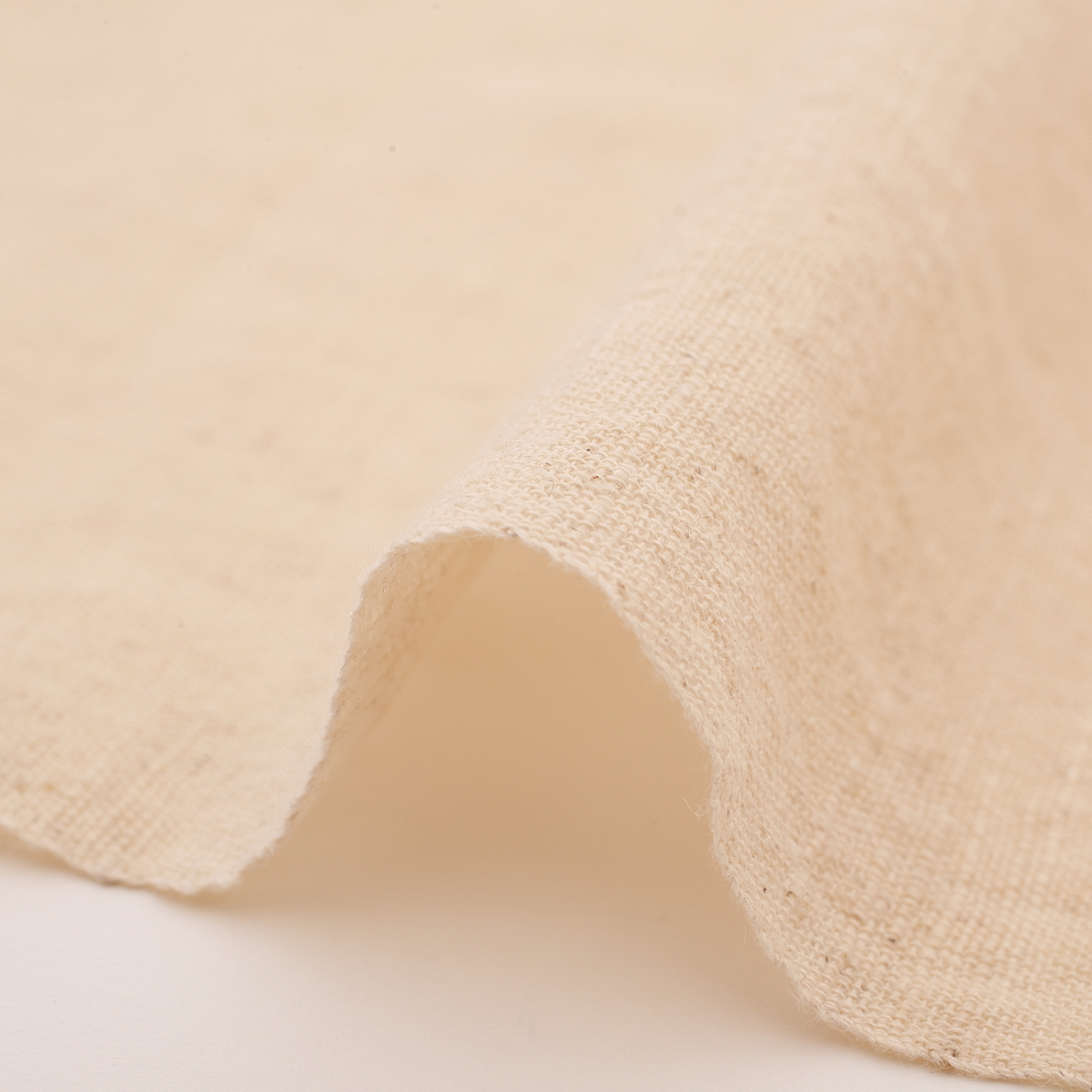
Menasa-Fushiori
It is a soft and fluffy fabric spun from just 50% cotton and 50% linen.
It is suitable for summer and fits well with T-shirts or cut and sew and blouses.
Although the fabric is sheer, it does not become transparent when actually tailored into clothing.
View Menasa-Fushiori
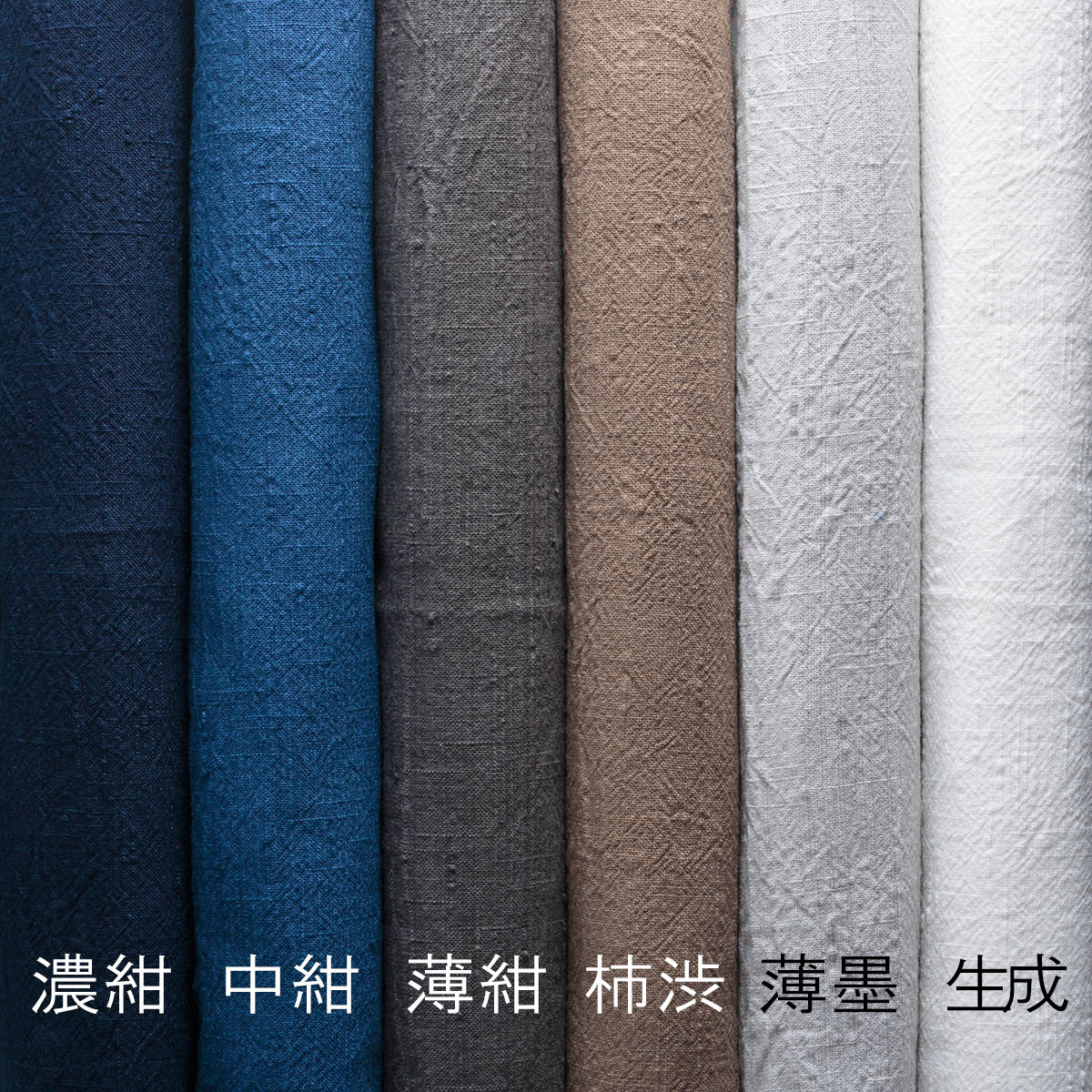
Futo-fushi
This fabric is characterized by a pocky texture called "slub".
Because the fabric is uneven, it does not cling to the skin even when sweating.
It is recommended for pajamas and tailoring around bedding. It is really comfortable.
View Futofushi

Shimofuri
The use of different colored threads in the warp and weft makes the color look different depending on the angle of view.
The name comes from the fact that it looks as if it is marbled.
It is slightly thicker, but soft and has the best texture.
It is suitable for all kinds of items as well as clothing.
View Shimofuri
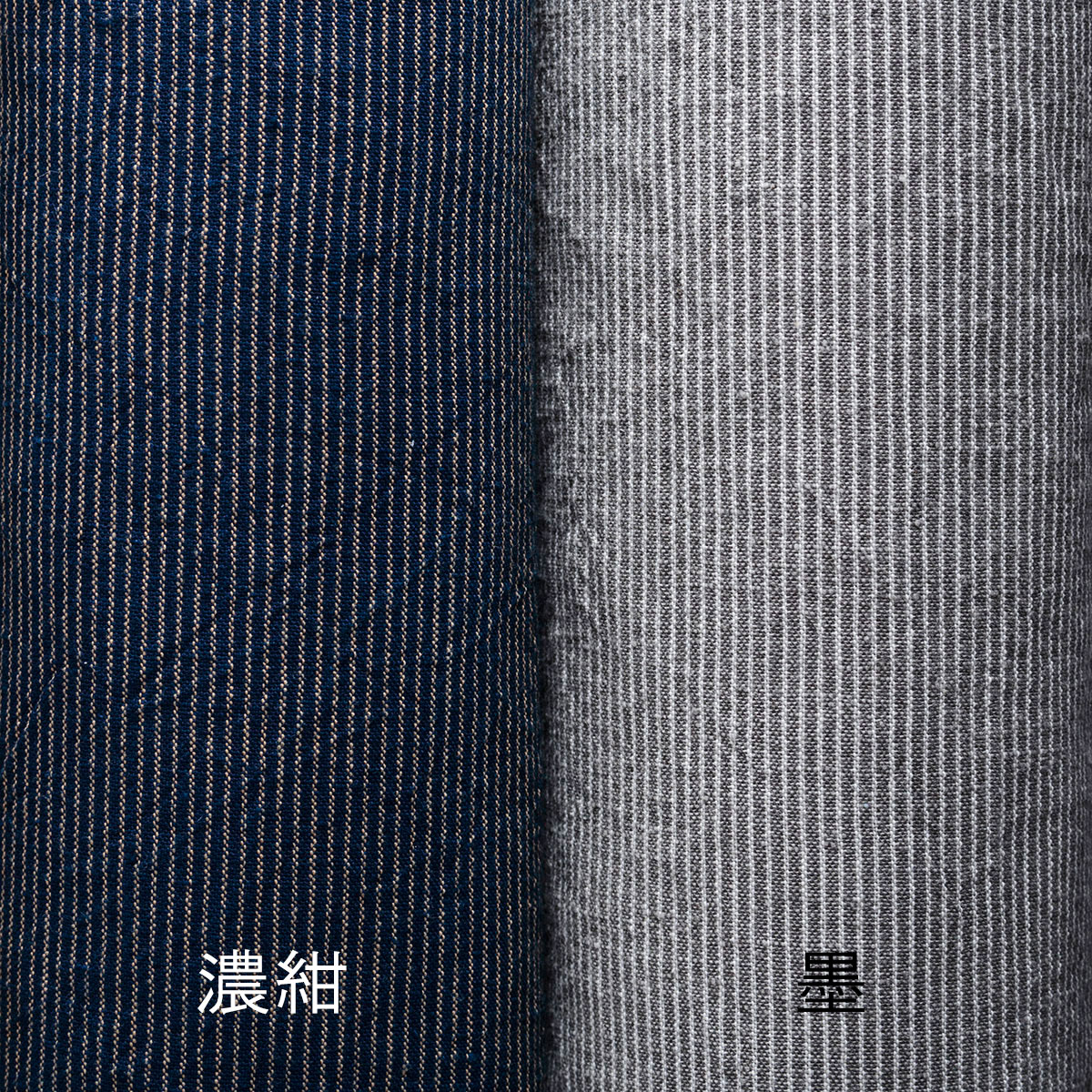
Daimyo-shima
This is a fine stripe pattern called pinstripe.
The pattern is simple, easy to use, and can be used for any occasion.
The chic color is recommended for cool men's shirts.
View Daimyo-stripes
Fushiori
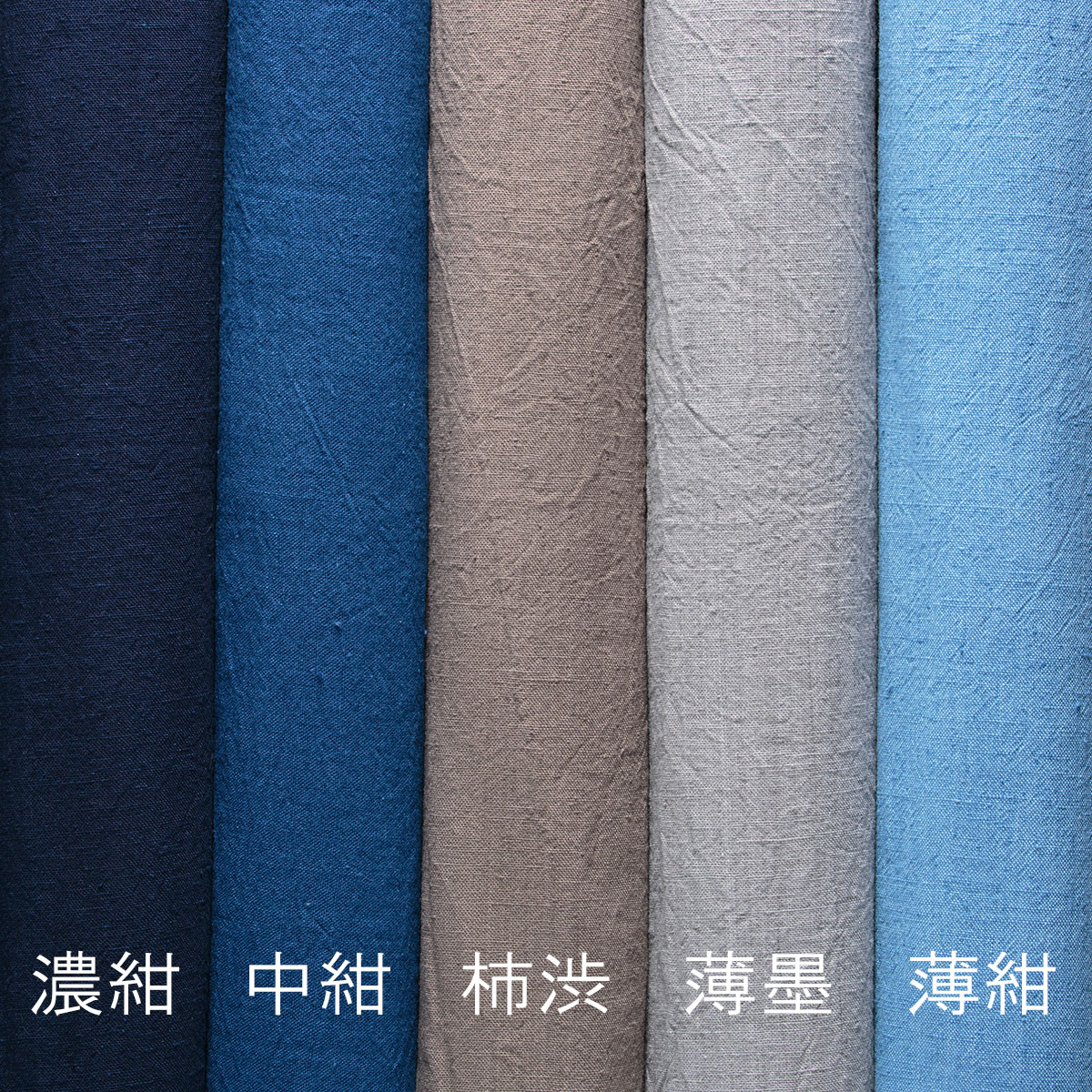 This is a general plain weave fabric.
This is a general plain weave fabric.
It is just the right thickness and has a wonderful texture and feel.
It is the easiest to use and is recommended for beginners.
View Fushiori
Summary: Once again, cotton is a wonderful fabric
Once again, this article has introduced the following about cotton fabrics.
- Cotton is a relatively cheap and practical natural material
- Advantages are excellent water absorbency and durability, and environmentally friendly
- Disadvantages are easy to wrinkle and shrink easily
- There are three main types of cotton
- Organic cotton is an earth-friendly cotton material
- If you want cotton to last longer, wash in water and dry in shade
- Recommended uses for cotton are shirts, pajamas, and cushion covers
I have found that cotton fabric is truly versatile and widely used for a variety of items.
Finally, in addition to the five types of fabrics introduced above, I have many other cotton fabrics in our company.
The fabrics are available in a wide variety of widths and colors, and can be purchased in 50 cm lengths.
If you are worried about purchasing fabrics out of the blue, we also have samples available for you to try.
I hope this article will help you get to know cotton better in the future.
Click here to visit our online store where you can purchase cotton fabrics.
